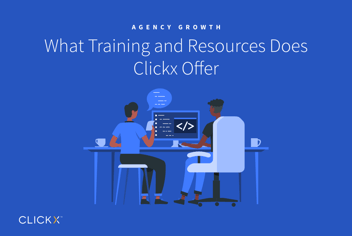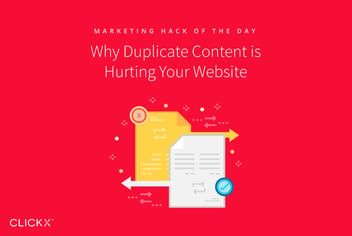17 Common Mistakes to Avoid When Building Your Website
No matter what industry you’re in, your website is the world’s view into your business. Whether you’re working on a redesign or building it from the ground up right now, there are a variety of things you’ll need to ensure its success. Research has shown that there are a number of different mistakes that business owners and organizations make, and thankfully, this research makes it so that you don’t have to make the same mistakes when creating your own website.
We can break down the 17 mistakes to avoid into five different categories.
Site Function
1) Your website is non-responsive.
If your site doesn’t adjust automatically to smartphone size, tablets, desktop and laptop monitors, people are going to click off of your site and onto one that does. Statistics have shown that non-responsive sites have a 40 percent bounce rate.
2) Your website is slow to load.
This figure may surprise you, but nearly half of website visitors will abandon a site that doesn’t load in under three seconds. If your site is slow, you will lose a lot of traffic. Increasing website speed can be as simple as compressing the images on it and choosing a faster web host such. Be sure to uninstall any unnecessary plugins, as well.
Copy and Verbiage
3) Your website has no headline.
If your website doesn’t have a headline, people have nowhere to start with your site. Eight out of 10 people will read the headline, whereas only two out of 10 will go on to read the rest, so it’s essential to have a headline that describes your site.
4) Your site has an unbelievable headline.
Wild or exaggerated claims about what your site or business can do will turn people away. Visitors look to the headline to decide whether to keep reading or not, so make sure that your headline is catchy but also believable.
5) Your copy is too unreadable/illegible.
This could be in a category about design as well, but the truth is the readability will effect how much of the copy gets read, so be sure that any digital text on your website is easy to read. Reading digital text is 25 percent slower than reading print text, so be sure to use easy to read fonts (Helvetica and Arial are two great ones) as well as proper line spacing and text size. Want to check your website’s readability? Visit http://read-able.com
6) Walls of text obscure your overall message.
People in general have short attention spans, but especially when browsing the internet. Use short paragraphs, bullet points, and relevant calls to action to break up information. Too much unstructured text will have visitors running.
[Tweet “Avoid these common mistakes at all costs! Building your own #website can be trickier than you think. http://clickxstag23.wpengine.com/17-common-mistakes-to-avoid-when-building-your-website”]
Poor Design and Difficult User Interfacing
7) Poor navigation and menus.
Avoid having more than seven links on your navigation menus, and keep only one navigation menu on the site—preferably at the top.
8) Using irrelevant images.
Stock photos can be helpful, but only if they make sense to use. Use imagery that supports your content, branding, and business, and try only to use stock photos when absolutely necessary – original photos are always more interesting.
9) Too busy a design/too much clutter.
It can seem tempting to use a number of different fonts, lots of pictures, plenty of informative text, and ignore the need for having white space. This is a huge mistake, though, as it will make your website look too overwhelming and cause people to click away from your site.
10) Annoying or poorly-timed pop-ups.
Many websites have pop-ups that ask visitors to subscribe to a newsletter or perform another sales-y action as soon as the website loads—before visitors even have any information or have had a chance to read anything. These pop-ups are sent up too soon and can be a deterrent to sales and consumer interest.
CTA Problems
11) No calls to action.
Giving visitors a method to take action is essential. No calls to action means no leads. Keep the action specific (“get a consultation today,” “purchase here,” for instance) and keep it short—no more than five words.
12) Weak calls to action.
Weak calls to action can mean using too few words. Buttons that simply read “Buy” or “Click” can be unclear CTAs, and can mean your visitors won’t click.
13) Invisible calls to action.
Don’t let your CTA button blend into the background. Make sure it’s a contrasting color so that visitors can easily find it.
14) Too many calls to action.
Similarly to have no calls to action, having too many can be a bad thing. Have too many and your visitors will feel like you don’t care about their needs, only their money. That’s not a good look for your business.
Not Harnessing Your Site’s Power for Business Growth
15) No proof of your credibility.
In order to convince people to work with your business, you have to establish your business as trustworthy. A big mistake is not including any sort of review or testimonial information—people want to know that you know what you’re doing and that you can handle their needs. Include trust seals like certification logos, press releases, and other authentic credibility proof signals to ensure that your visitors can feel confident in what you are offering.
16) Not tracking website conversions.
There are a number of ways to track conversions, and if you’re not doing this, you’re wasting all of your hard work. Track things like traffic on the website, traffic sources, new vs. returning visitors, session duration, bounce rate, and cost per conversion, and then adjust your strategy accordingly.
17) Making your website a muted salesperson.
You want people to work with you, right? Your website is your best salesman. While it’s important to have balance, you also don’t want to be too quiet about the concept that you do offer a product/service. Your website needs to communicate with each visitor in a way that the visitor learns what your business does and why they should work with you and not your competitors. Be confident and bold, and make sure that your visitors have a way to get in touch with you!
Now that you know about the 17 mistakes you absolutely MUST avoid making when building your business’ website, it’s easy to go forward and create the best site you can!
For more information about updating your existing website or building a new one that suits your business’ needs, don’t hesitate to contact Clickx!








